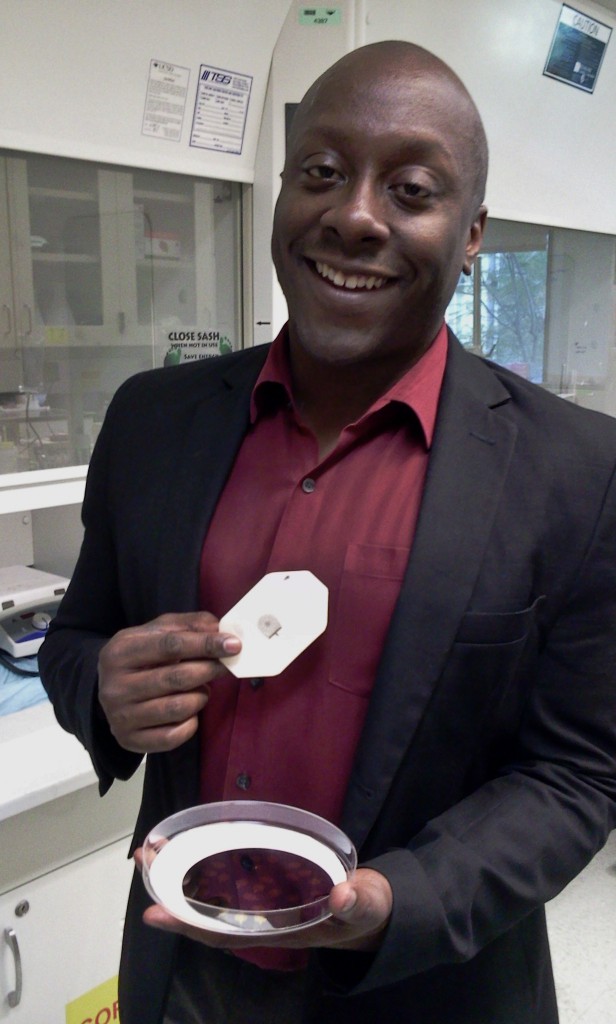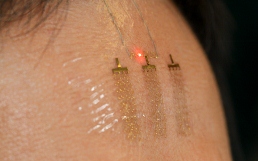Podcast: Play in new window
BOB HIRSHON (host):
Ultrathin brain monitors. I’m Bob Hirshon and this is Science Update.

Imagine ultrathin, flexible electronic sensors that attach to the forehead and monitor brain signals, transmitting the data wirelessly. They’re no longer the stuff of science fiction, according to University of California, San Diego engineer and neuroscientist Todd Coleman, who says they could eventually replace the large and clunky EEG machines typically used to track brain activity.
TODD COLEMAN (University of California, San Diego): These are very thin sensors, about the thickness of a human hair, that can bend and stretch naturally with the skin. And it’s so small and so thin that it can be embedded inside a temporary tattoo.
HIRSHON: He and his colleagues are already using the devices to monitor the brain rhythms of babies who have suffered a brain injury during birth. Other applications include measuring cognitive decline in patients with Alzheimer’s disease or other mental illnesses. I’m Bob Hirshon for AAAS, the science society.

 Podcast for 16 February 2013
Podcast for 16 February 2013